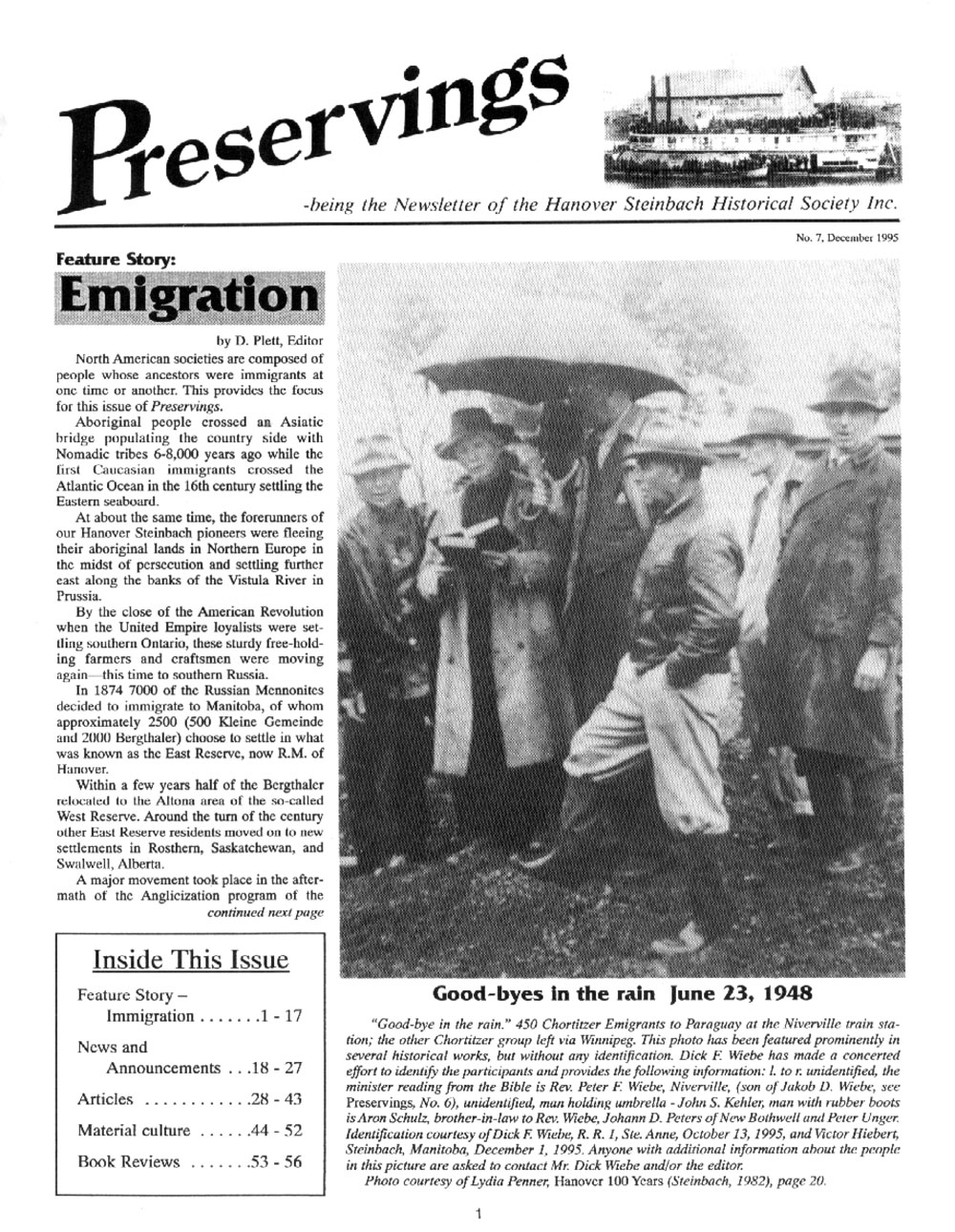
Emigration
North American societies are composed of people whose ancestors were immigrants at one time or another. This provides the focus for this issue of Preservings.
Aboriginal people crossed an Asiatic bridge populating the country side with Nomadic tribes 6-8,000 years ago while the first Caucasian immigrants crossed the Atlantic Ocean in the 16th century settling the Eastern seaboard.
At about the same time, the forerunners of our Hanover Steinbach pioneers were fleeing their aboriginal lands in Northern Europe in the midst of persecution and settling further east along the banks of the Vistula River in Prussia.
By the close of the American Revolution when the United Empire loyalists were settling southern Ontario, these sturdy free-holding. farmers and craftsmen were moving again-this time to southern Russia.
In 1874 7000 of the Russian Mennonites decided to immigrate to Manitoba, of whom approximately 2500 (500 Kleine Gemeinde and 2000 Bergthaler) choose to settle in what was known as the East Reserve, now R.M. of Hanover.
Within a few years half of the Bergthaler relocated to the Altona area of the so-called West Reserve. Around the turn of the century other East Reserve residents moved on to new settlements in Rosthern, Saskatchewan, and Swalwell, Alberta.
A major movement took place in the aftermath of the Anglicization program of the [Manitoba provincial government]. When the church private school system was abolished in direct contravention of the 1873 “Letter of Privileges” which had induced them to come to Canada, a group of Chortitzer Mennonites went to Paraguay where they established the Menno Colony in 1927.
At very much the same time, the Soviet Revolution, Machno insurgents and famine devastated the Mennonite settlements in Russia so that some 23,000 immigrated to Canada. The first group of these so-called “Russländer” arrived in Giroux on August 20, 1923.
A second series of major immigrations occurred in 1948 when another group of Chortitzer moved to Paraguay. At the same time, some 65 conservative Kleine Gemeinde families, besieged by American fundamentalists in their own ranks, moved to Mexico, from where a smaller group moved on to Belize in 1958.
World War Two directly affected those Mennonites left in Russia as the battle front twice engulfed what was left of their once flowering settlements. The lucky ones were able to flee back to Germany while others perished in Stalin’s Gulag. Many of these refugees came to Hanover Steinbach in 1948 as so-called “D.P.s” or Displaced Persons.
Our community has frequently experienced immigration: the farewells to relatives never to be seen again, the challenges of establishing new settlements, etc. The stories in the feature section provide insight into the drama and pathos of our history.

